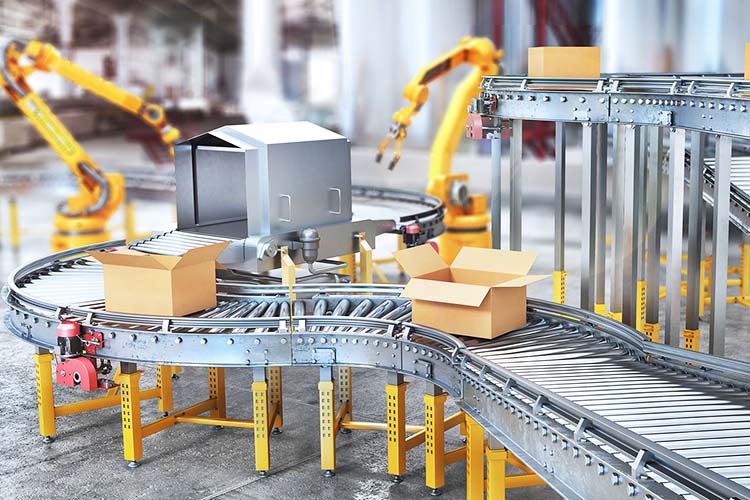पैकेजिंग उपकरण खरीदते समय भविष्य की योजना
किसी नई परियोजना के लिए पैकेजिंग उपकरण खरीदना समय लेने वाला, महंगा और भ्रमित करने वाला भी हो सकता है यदि खरीदार के लिए प्रक्रिया नई हो। एक ही मशीन श्रेणी के भीतर भी कई अलग-अलग विकल्प होते हैं, और अनुभव और ज्ञान की कमी के कारण नौकरी के लिए सर्वश्रेष्ठ उपकरण का चयन करना मुश्किल हो सकता है। दुर्भाग्य से, कई लोगों के लिए जो उत्पादों की पैकेजिंग में नए हैं, चाहे वह स्पिरिट हो, बोतलबंद पानी हो, शैम्पू हो, या कोई अन्य उत्पाद हो, ओवरफ्लो सिद्धांत, स्पिंडल कैपर और इंडक्शन सीलर जैसे शब्द शायद ज्यादा समझ में न आएं। पैकेजिंग मशीनरी निर्माता इस कार्य में नए पैकर की मदद कर सकते हैं, लेकिन पैकेजिंग आवश्यकताओं का विश्लेषण केवल सही प्रकार की मशीन चुनने तक ही नहीं रुकना चाहिए।
पैकेजिंग मशीनरी की प्रारंभिक खरीद हमेशा भविष्य को ध्यान में रखकर की जानी चाहिए ताकि पैकर का पैसा और समय बचाया जा सके। अधिकांश स्टार्टअप पैकेजर्स उन जरूरतों के बारे में जानते हैं जिन्हें उत्पादन शुरू होने के बाद पूरा किया जाना चाहिए। हालाँकि, ऐसी पैकेजिंग लाइन बनाना जो केवल उन्हीं जरूरतों को पूरा करती हो, आमतौर पर एक गंभीर गलती है। लगभग हर पैकेजर का अंतिम लक्ष्य बढ़ना या विस्तार करना, शेल्फ स्थान जोड़ना या वितरण क्षेत्रों का विस्तार करना है। भविष्य की वृद्धि की आशा करके, उस वृद्धि को सक्षम करने के लिए पैकेजिंग उपकरण बनाए जा सकते हैं और एक या दो साल में अनिवार्य रूप से बेकार मशीनरी होने की स्थिति से बचा जा सकता है। जैसा कि ऊपर उल्लेख किया गया है, उपकरण की लागत एक महत्वपूर्ण व्यय हो सकती है, विशेष रूप से स्वचालित प्रणालियों के लिए, इसलिए नए पैकेजर्स को लंबे समय तक अपेक्षित जीवन के साथ उपकरण खरीदने की इच्छा के साथ वर्तमान नकदी प्रवाह की आवश्यकता को संतुलित करने की आवश्यकता होती है।

पैकेजिंग मशीनरी खरीदते समय और भविष्य के लिए योजना बनाते समय ध्यान देने योग्य बातें
- विभिन्न उत्पाद और पैकेजिंग – यह कहना सुरक्षित है कि लगभग सभी पैकेजिंग मशीनरी परियोजना के अनुसार अनुकूलित की जाती है। विभिन्न कंटेनर आकार और प्रकार, विभिन्न कैप प्रकार, उत्पाद की स्थिरता, और अन्य कारक सभी एक पैकेजिंग लाइन के डिज़ाइन को प्रभावित कर सकते हैं। ध्यान रखें कि यदि आप एक अलग उत्पाद या उसी उत्पाद के लिए एक अलग पैकेज शुरू करने की योजना बना रहे हैं, तो मौजूदा पैकेजिंग मशीनरी इन परिवर्धनों को संभालने में सक्षम होनी चाहिए, या फिर एक पूरी नई लाइन की आवश्यकता होगी। उदाहरण के लिए, यदि एक पैकager छोटी एक- या दो-औंस बोतलें शुरू कर रहा है लेकिन भविष्य में बड़े बोतल जोड़ना चाहता है, तो उसे सुनिश्चित करना चाहिए कि उपयोग किया गया पावर्ड कन्वेयर सिस्टम बड़े कंटेनरों को संभालने के लिए समायोज्य हो। यही बात अलग पैकेजिंग मशीनरी जैसे भरने वाली मशीनें या कैपिंग उपकरण पर भी लागू होती है।
- रफ़्तार – बेशक, मशीन जितनी तेज़ चलेगी, उतनी ही अधिक उत्पादन आवश्यकताएँ पूरी की जा सकती हैं। एक गलती यह है कि वर्तमान मांग को पूरा करने वाली पैकेजिंग उपकरण खरीदी जाए। उदाहरण के लिए, एक भरने वाली मशीन प्रति मिनट पचास बोतलें पूरी कर सकती है जिसमें दस भरने वाले सिर हैं, जो वर्तमान मांग को पूरा करता है। हालांकि, भविष्य में अधिक मांग को पूरा करने के लिए, कैन और फिलर बार में पोर्ट जोड़कर अतिरिक्त फिलर सिर जोड़े जा सकते हैं। एक अन्य स्थिति में, एक कंपनी कम से मध्यम मात्रा की मांग को पूरा करने के लिए सेमी-ऑटोमेटिक फिलर खरीद सकती है। ऐसी फिलर को ऑटोमेटिक फिलर के समान फ्रेम पर बनाया जा सकता है, और यदि आवश्यक हो तो उपकरण भविष्य में उच्च मात्रा संभाल सकता है।
- अंतरिक्ष – पैकेजिंग मशीनरी का वास्तविक भौतिक स्थान हमेशा ध्यान में रखना चाहिए। जो कंपनियां भरने और कैपिंग मशीनों के साथ उत्पादन शुरू करती हैं, उन्हें व्यापक उत्पादन क्षेत्र की आवश्यकता नहीं हो सकती है। वास्तव में, पैकेजिंग मशीनरी को टेबलटॉप या सिंगल-फ्रेम सिस्टम पर काम करने के लिए बनाया जा सकता है। हालांकि, यदि कोई कंपनी अपने प्रक्रियाओं को एक भाग में स्वचालित करती है, तो ध्यान रखें कि अतिरिक्त उपकरण अतिरिक्त स्थान की मांग करेंगे। इसी तरह, पूरी तरह से स्वचालित प्रणालियों वाली कंपनियां सहायक उपकरण जैसे कोडर, इंडक्शन सीलर, नेक बेल्ट या अन्य उपकरण जोड़ना चाह सकती हैं। अधिकांश स्वचालित उपकरण को आसानी से मौजूदा कन्वेयर सिस्टम में रोल किया जा सकता है और यदि स्थान उपलब्ध है तो इसे आसानी से एक मौजूदा सिस्टम में एकीकृत किया जा सकता है। कन्वेयर को जोड़कर लाइन की जगह बढ़ाई जा सकती है।
गति, दायरे और स्थान के मामले में खुद को ढील देने से पैकेजिंग सिस्टम को अपनी जीवनकाल बढ़ाने की अनुमति मिलती है और विश्लेषिकी की कमी के कारण हर साल नए उपकरण खरीदने के लिए आवश्यक समय और धन की बचत होती है। एक नया प्रोजेक्ट या व्यवसाय शुरू करने का उत्साह जल्दी ही फीका पड़ जाएगा यदि पैकेजिंग उपकरण की अनावश्यक लागतों को साल दर साल फिर से पेश किया जाता है।
